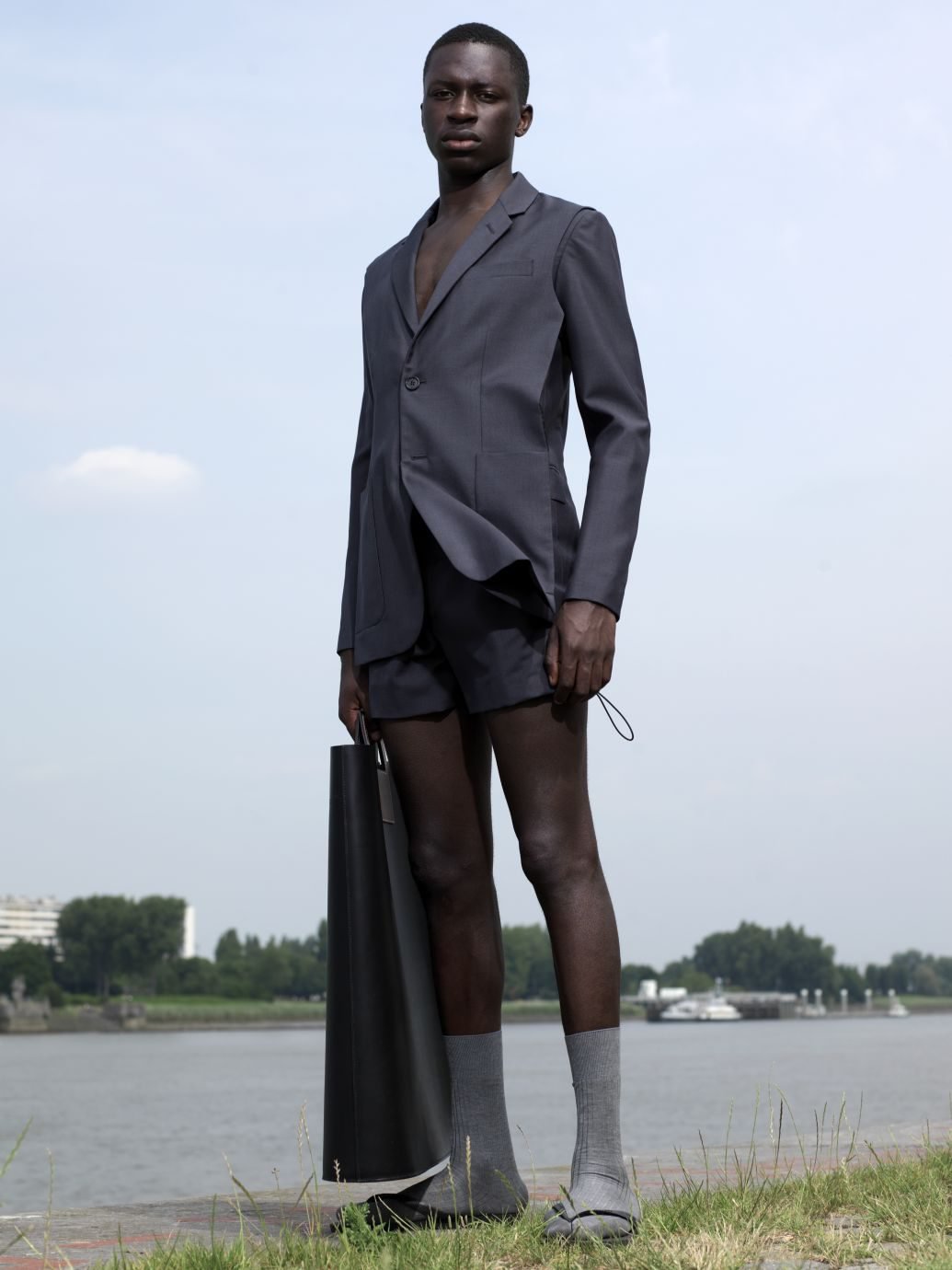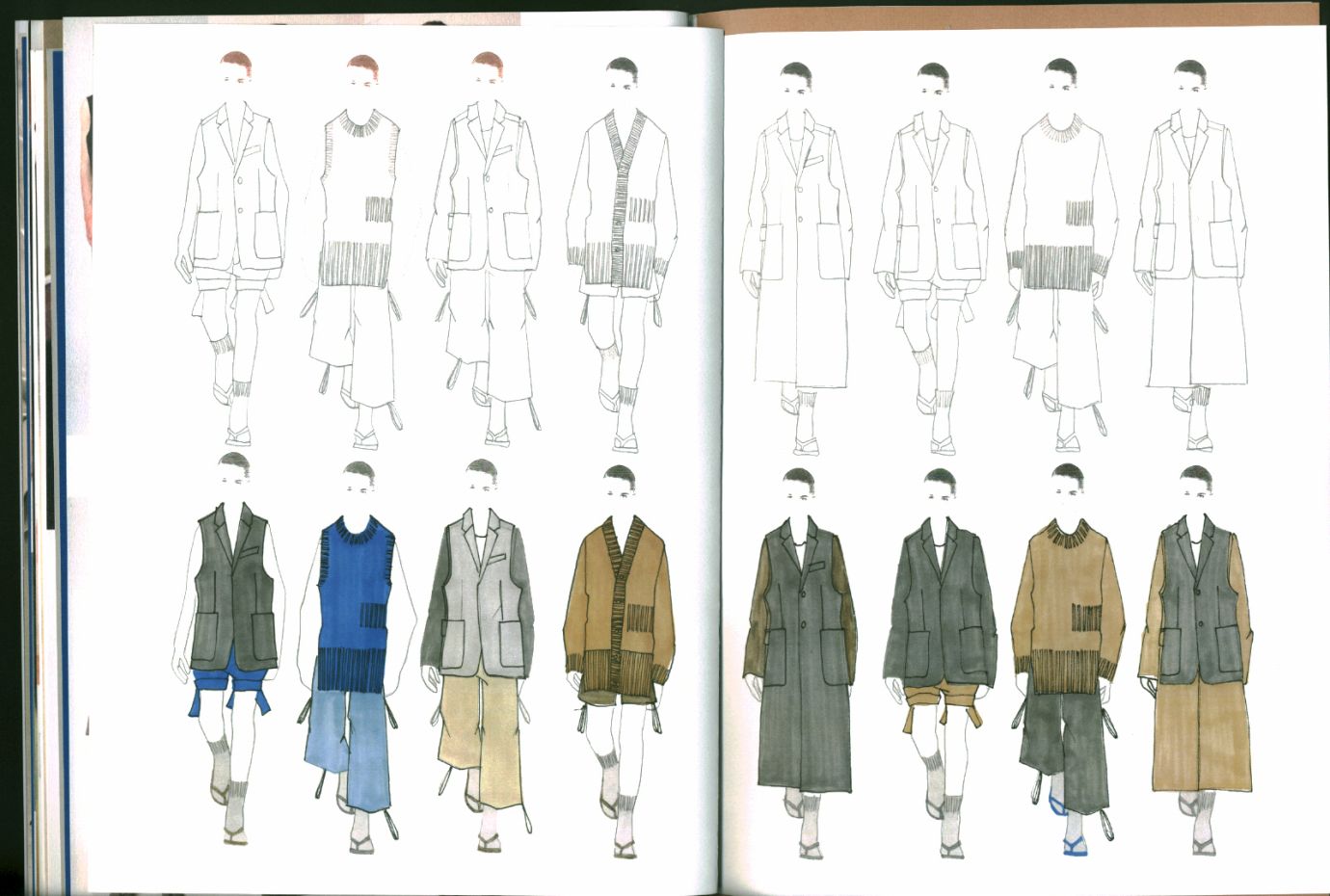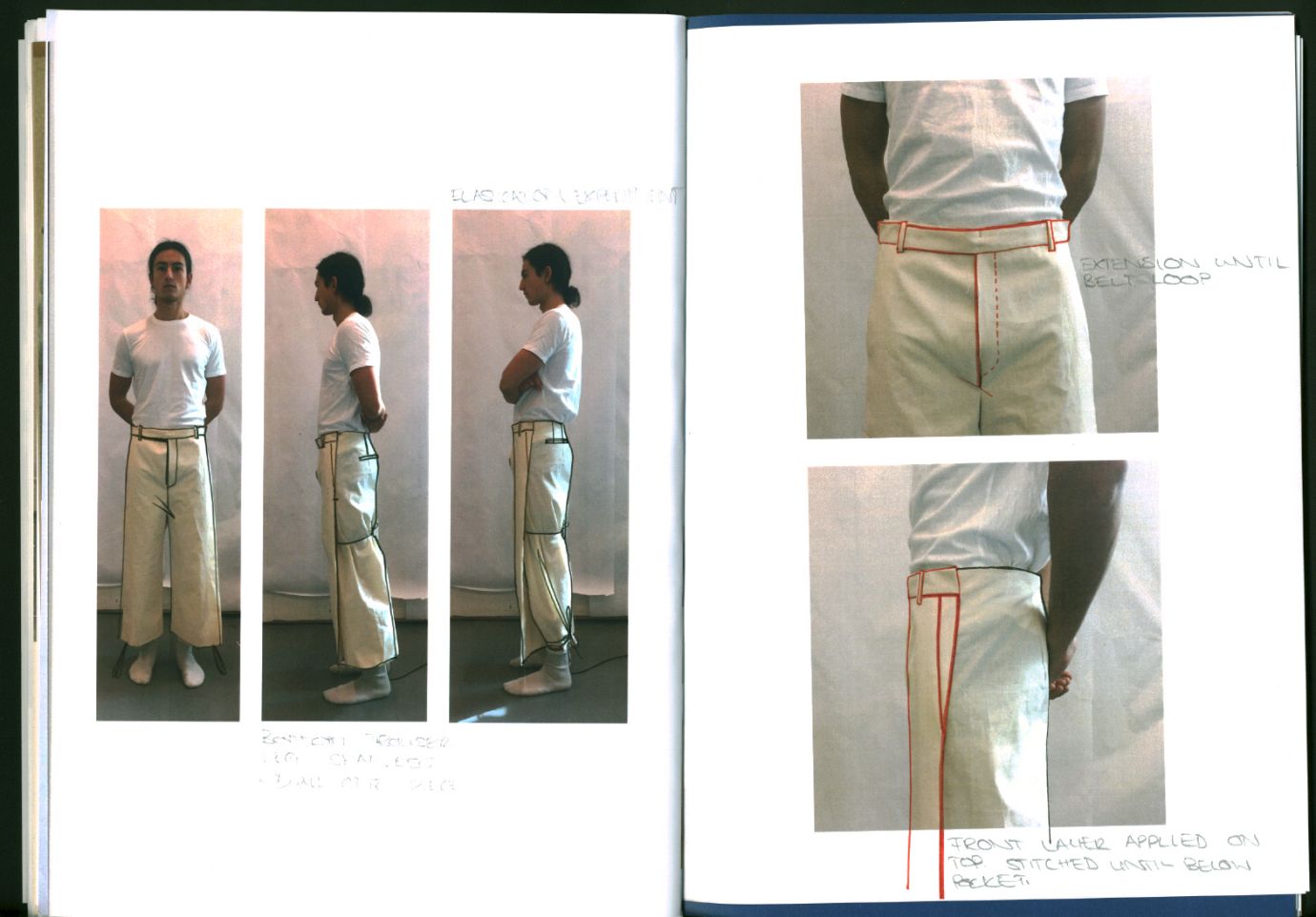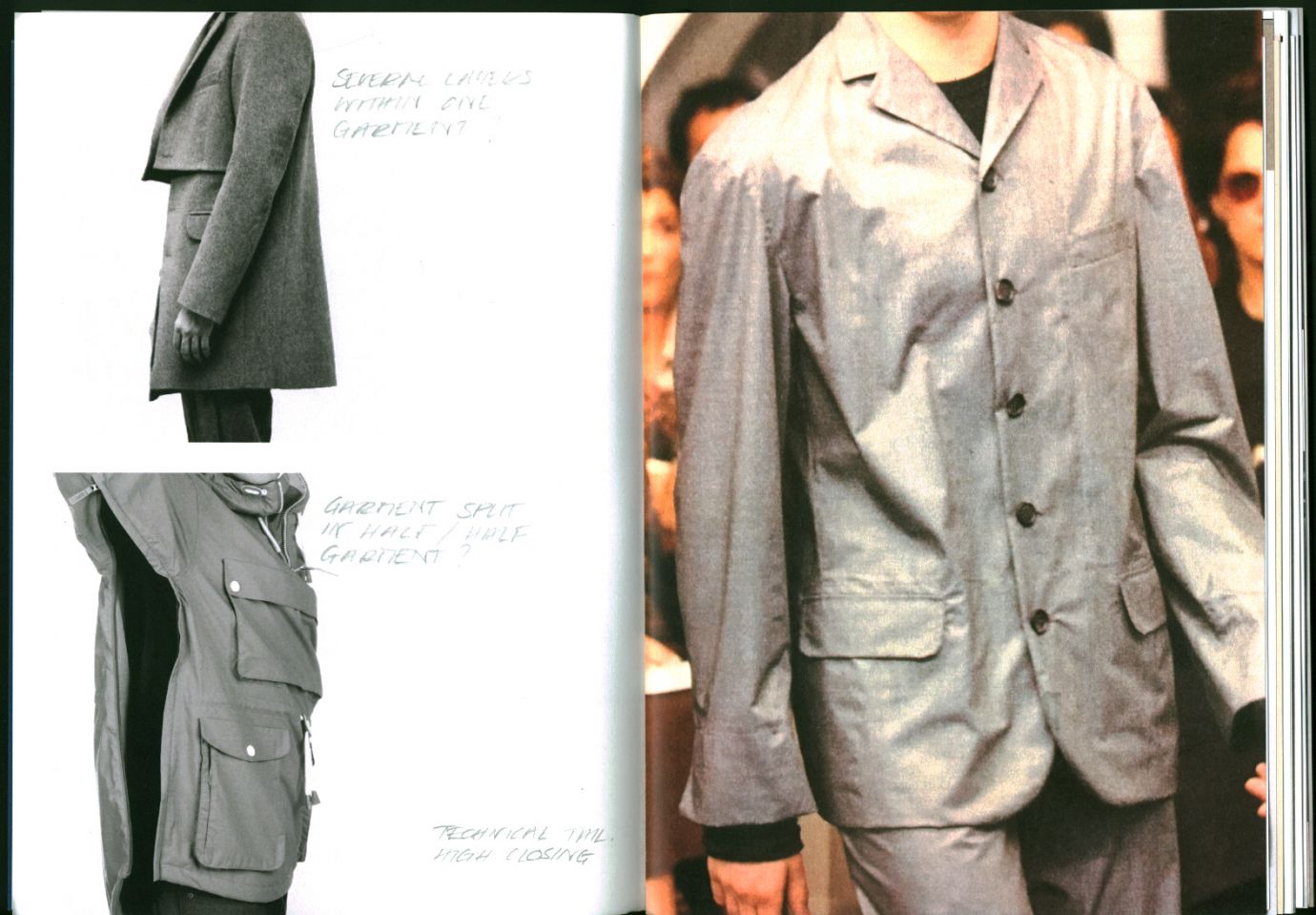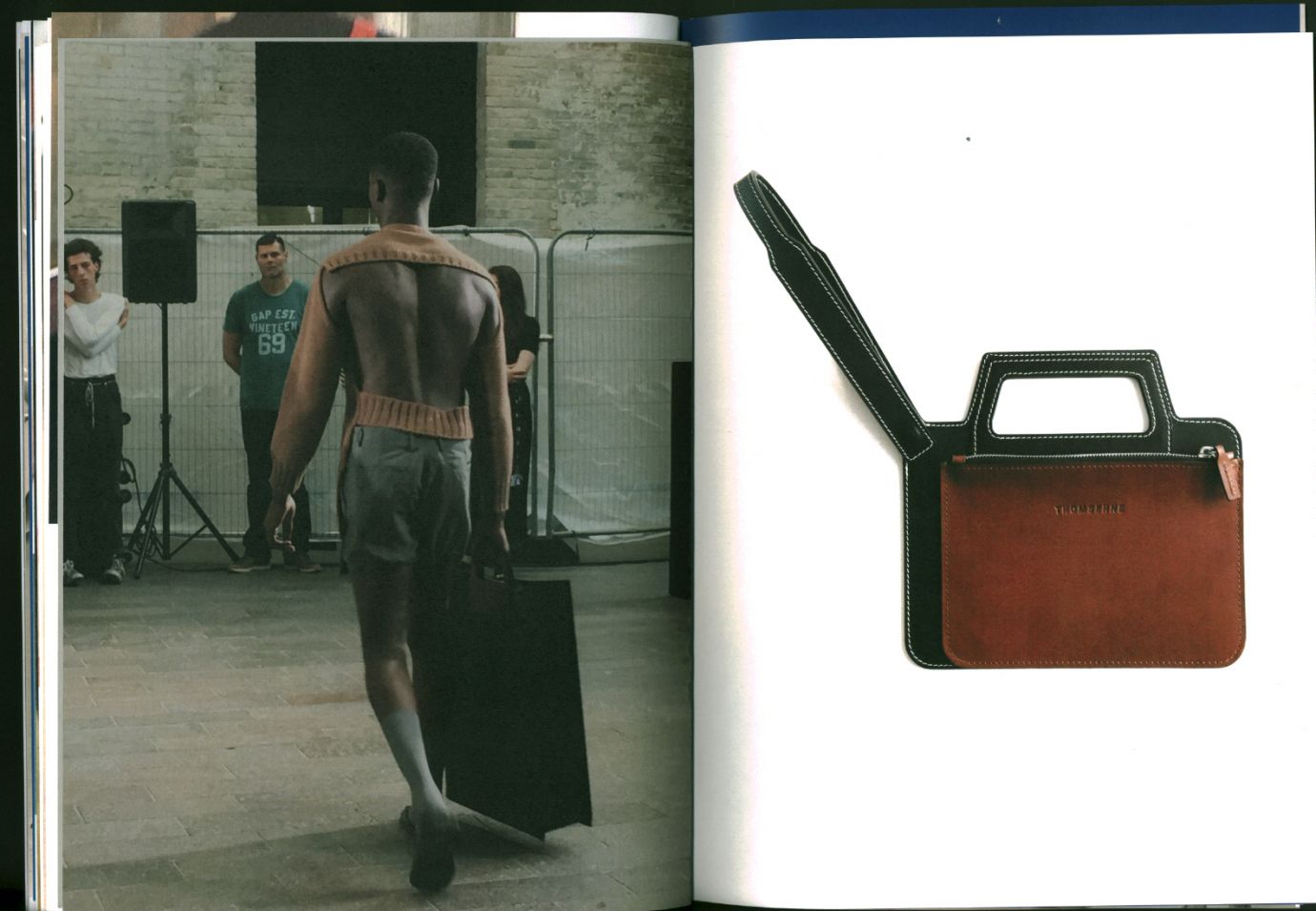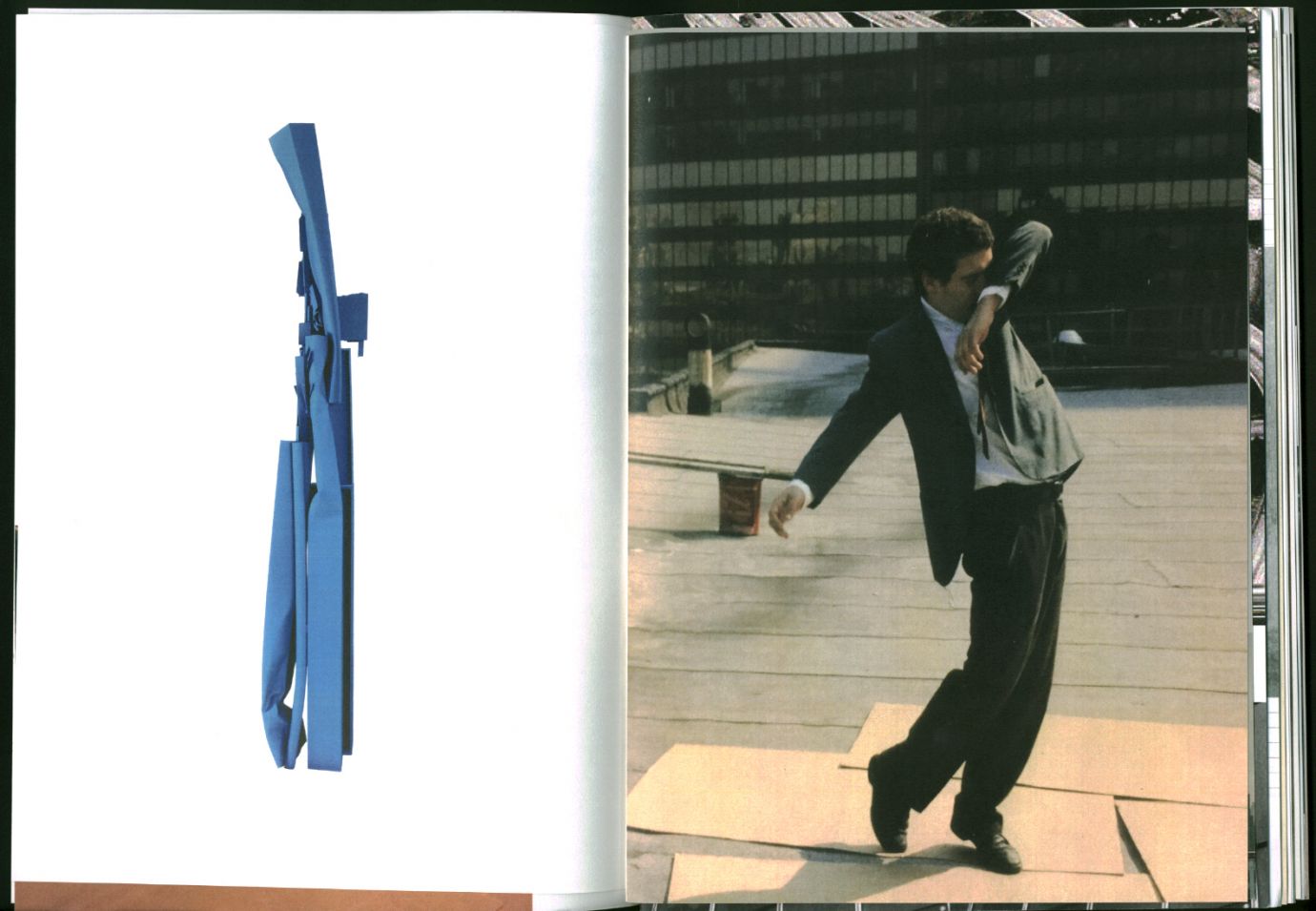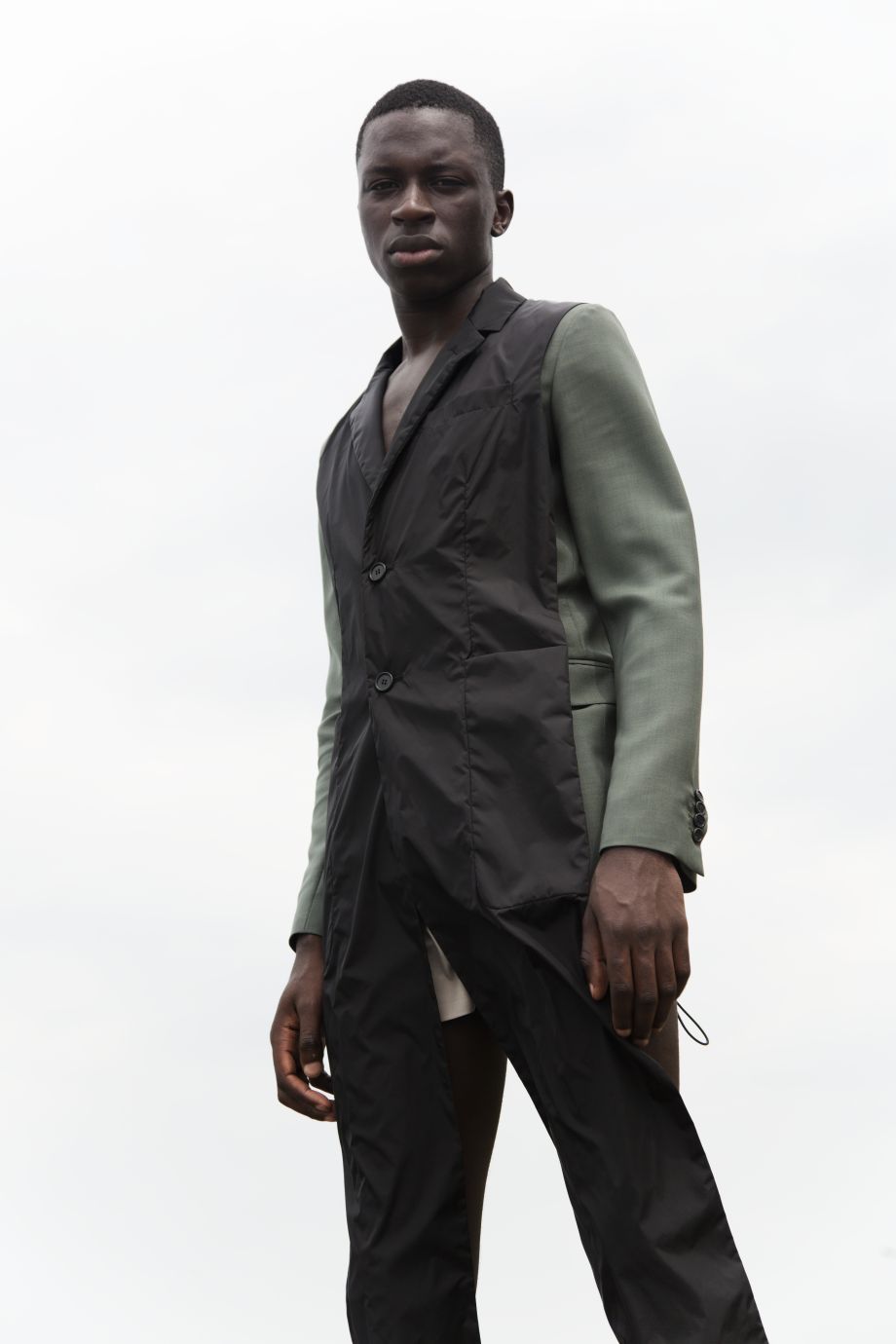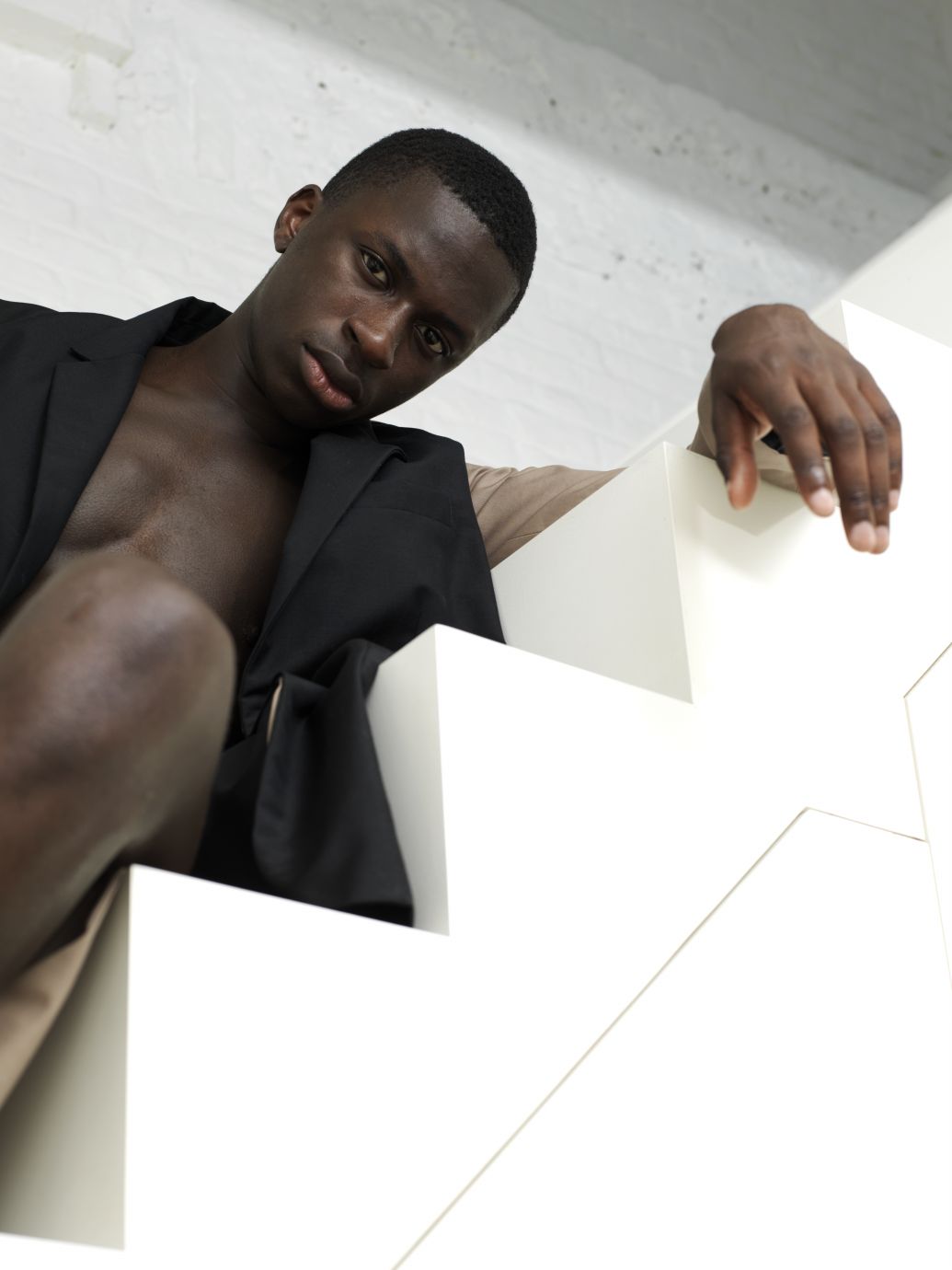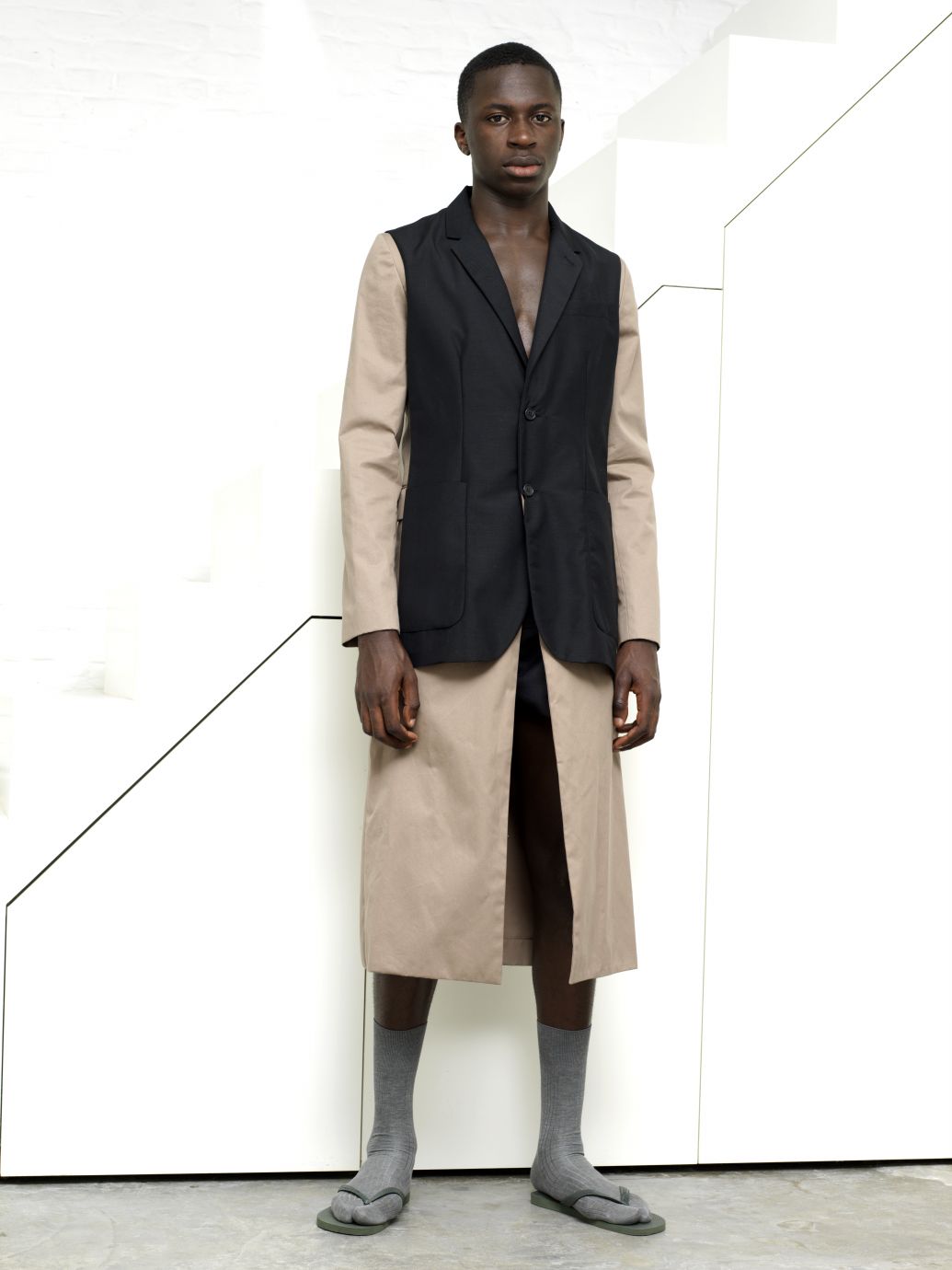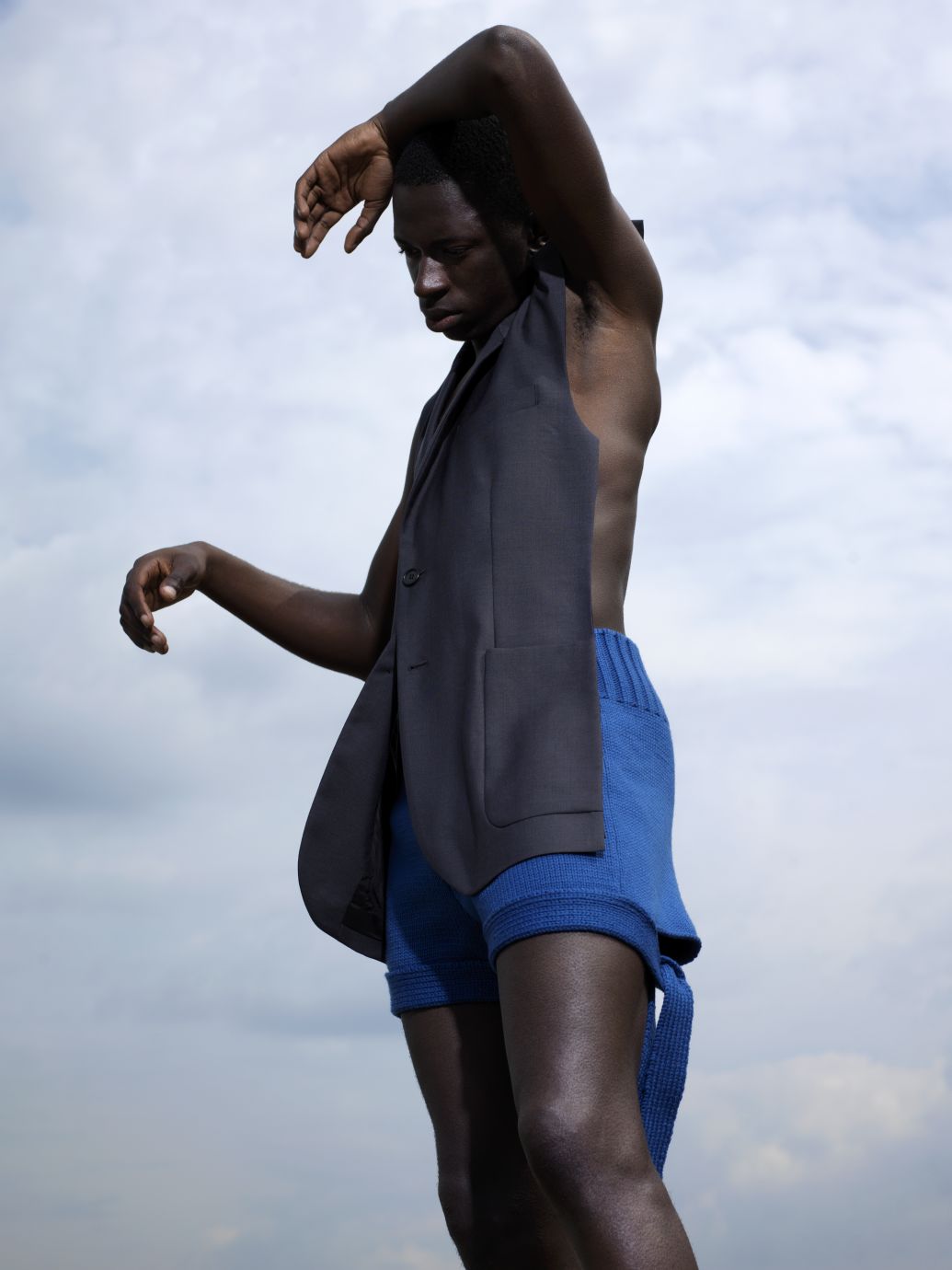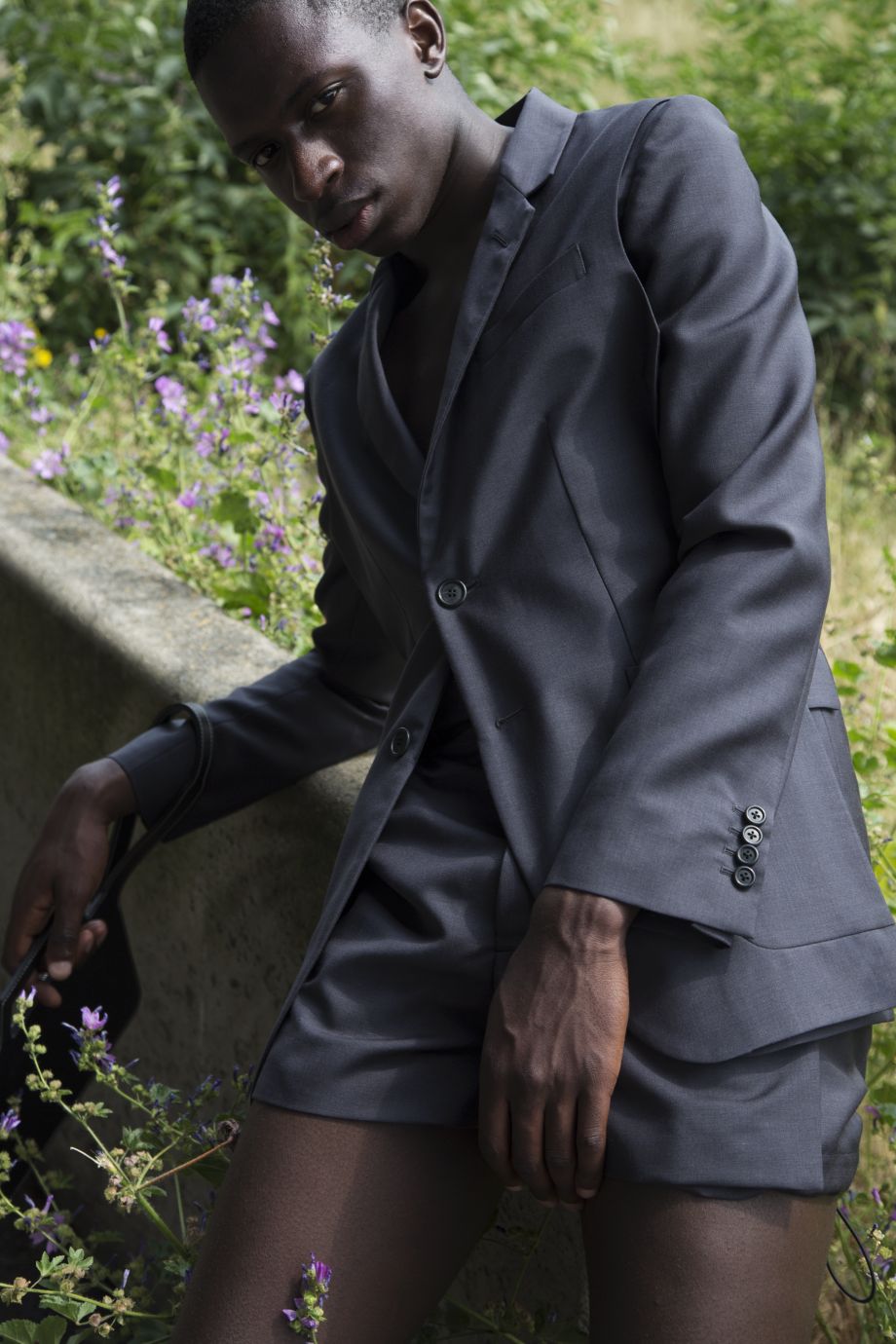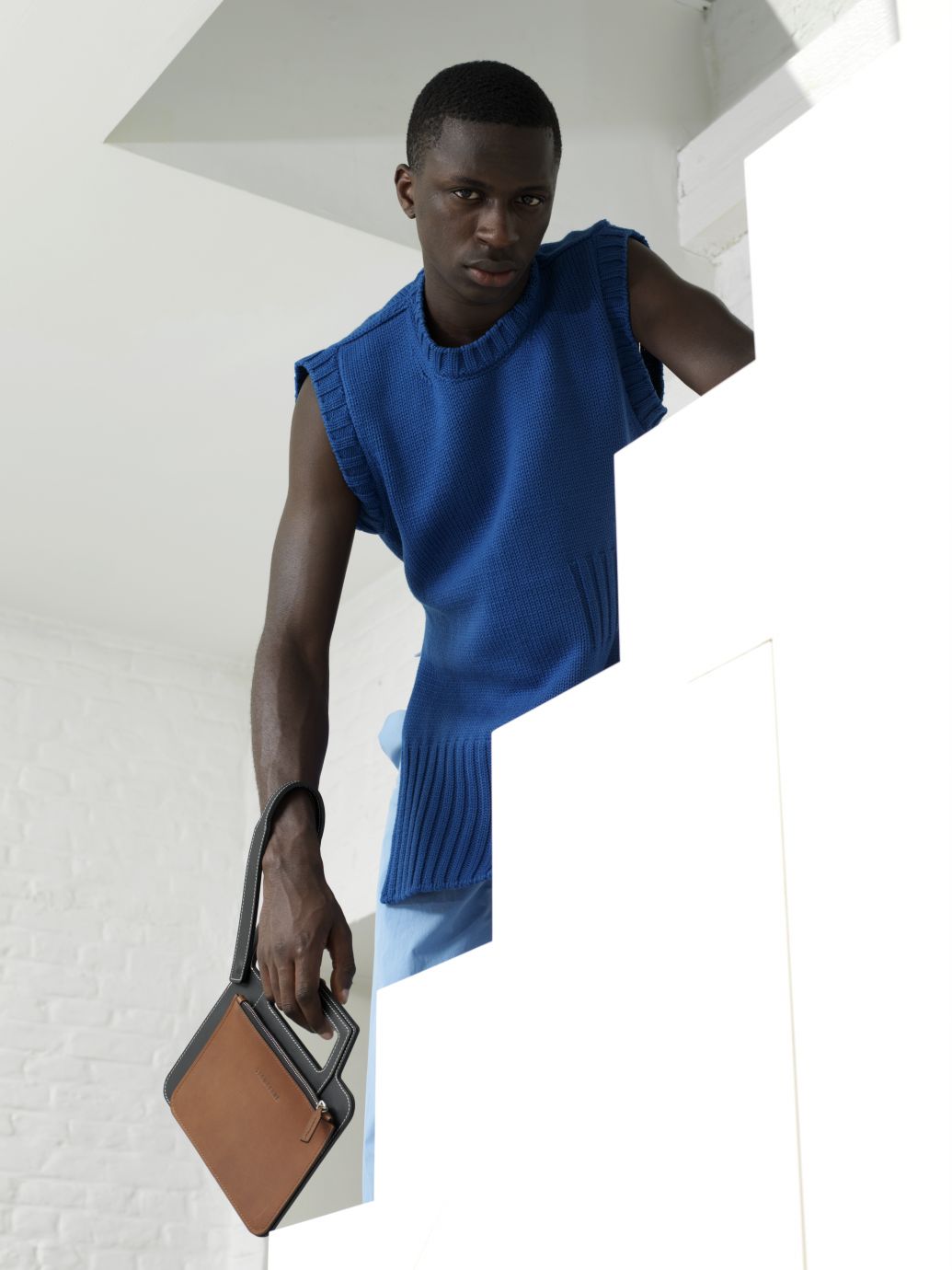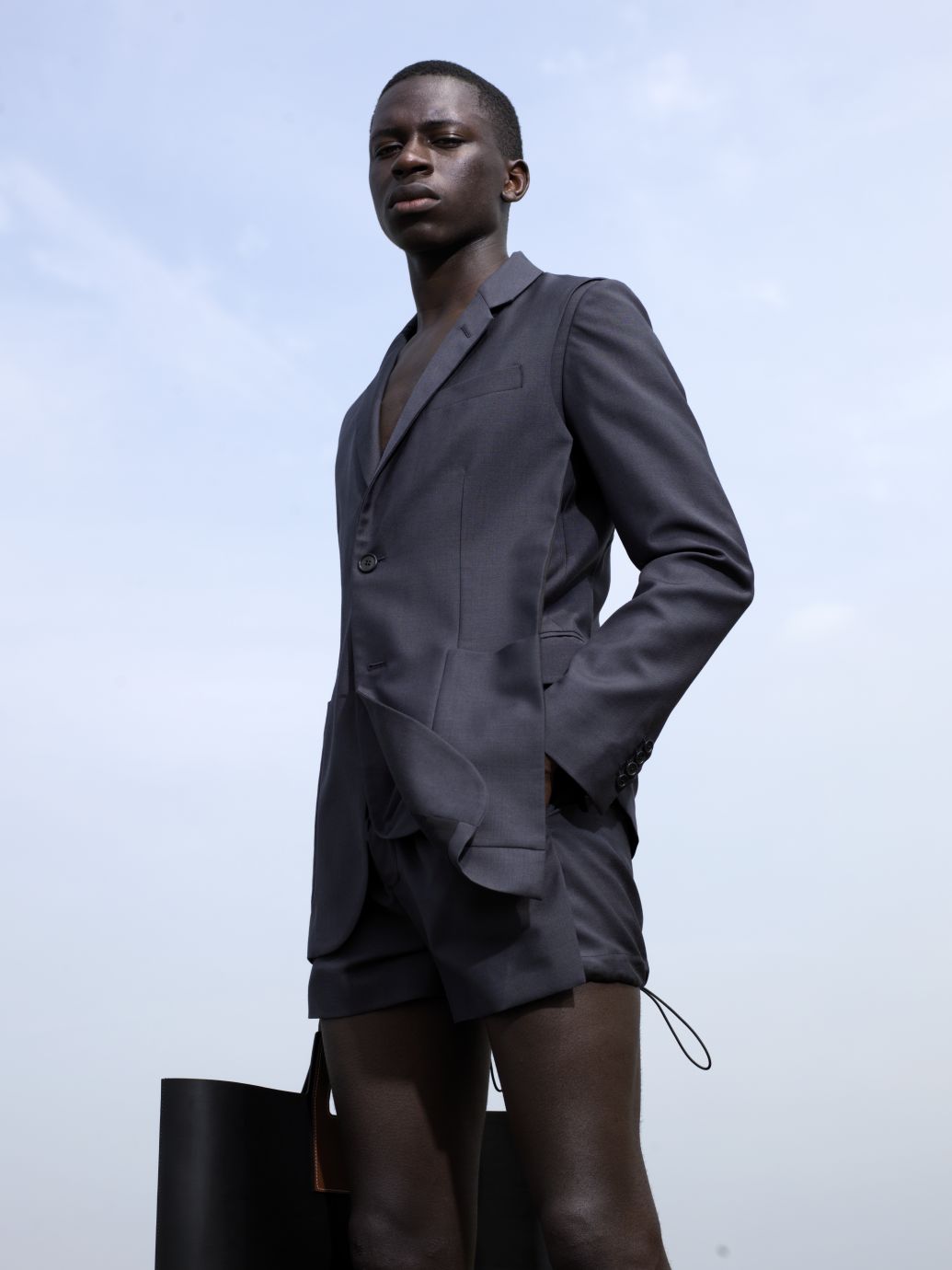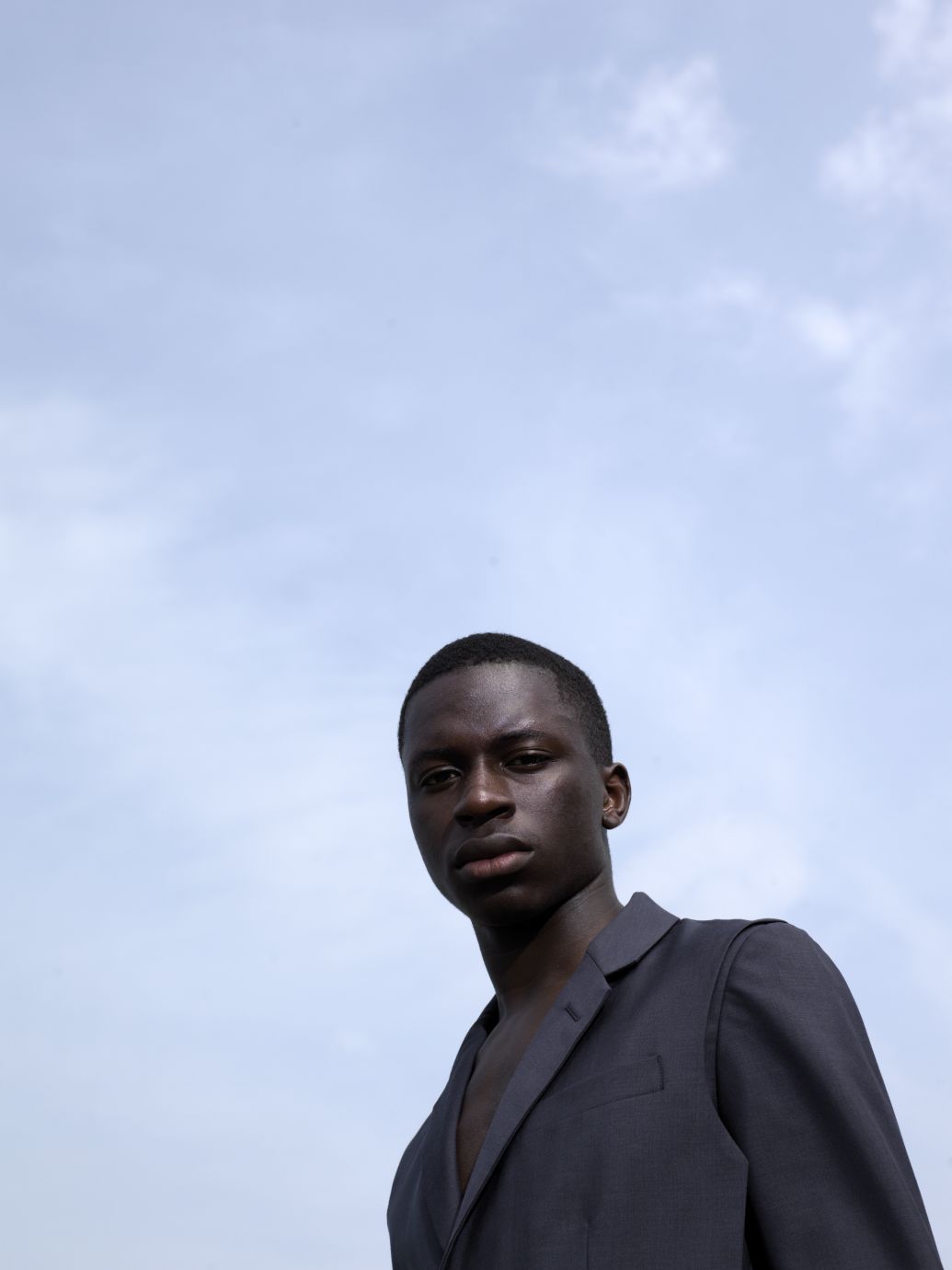After setting the initial mood and story, Thomas began to develop his ideas further by examining basic, mundane office wear. This led him to delve into the construction of a garment rather than the silhouette as the main focus of tailoring. “A garment we believe we know so well, we might not even pay attention to it. I wanted to create a certain depth in what seems to be so common and obvious.”
Through the sampling of details and construction, he continuously refined his ideas in order to develop a concept that could be carried through a whole collection. Reflecting aspects of design and tailoring, which was essential to his practice, Thomas aimed for his garments to feel familiar yet intriguing and thought-provoking to the viewer. “Interestingly, the pieces that might seem the most straight-forward and classic, were some of the hardest to develop.”
The main concept stemmed from the idea of a single garment having several identities within, revealing or changing itself, based on the angle it is viewed from. What appears to be a classic straight leg wool trouser from the front can turn into an elasticated nylon trouser from the back, giving a complete different character to the garment. From this, Thomas introduced the idea of layers within a person’s personality through tailored jackets and trousers using layers and fabric combinations. “Taking into consideration the corporate times we live in, I feel that this collection examines the conflicts that arise with it in regards to human individuality.”

